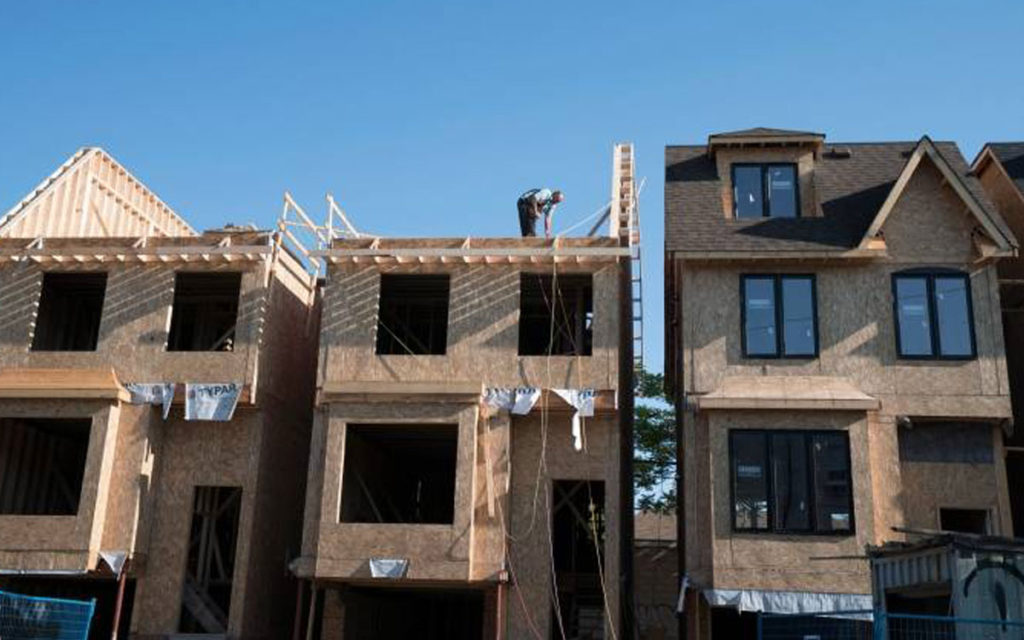
The high cost of housing has been a hot topic in Canada for a while now. Most shows talk about the rapid escalation of real estate prices in Toronto and the GTA or Vancouver and increasingly Montreal – but even here in Niagara, everyone is well aware of the same phenomenon. The Big City runaway home prices are clearly spilling over into surrounding smaller commuter communities. Lots of GTA residents are cashing in and moving to Niagara. This has escalated demand and with a restricted local supply has caused significant price escalations. The 1,500 square foot wartime era homes, listed for half a million dollars are everywhere.
According to the Ontario Real Estate Association, between 2001 and 2014 house prices grew by 133 per cent while household income grew only 36 per cent. The average down payment on a home purchase in 2017 was $38,000.
One “solution” has been to put a tax on foreign home ownership. Stop foreign ‘investment’ in real estate the story goes and you will dampen demand and therefore dampen prices. But evidence suggests that foreign ownership represents only about five per cent of the purchases. So what else is pushing up home prices?
Higher prices for resale of existing homes, is good for the generation that is in their last home. Your net worth just went up and if your last move is to an apartment or retirement home – it’s like winning the lottery. But for everyone else, especially first-time home buyers, sky rocketing home prices are a problem.
Young adults living in their parents’ basement until their 30’s are becoming the norm – they just can’t afford to move out. For young families, millennials, studies show that eight in 10 still have the dream of owning a home. People live in Niagara partly because they want the dream of a home with some space, some trees, a yard for their kids to play in – a backyard rink.
Jon Whyte, President of the Niagara Home Builders Association, says there are many reasons why the cost of homes has gone through the roof but a few that make a significant impact. “The approval process or the red tape nowadays is incredibly lengthy and there isn’t enough skilled labour,” said Whyte.
The last decade has seen the Ontario government impose restriction after restriction on the construction of new single family, detached homes. The most recent changes to the Places to Grow Act (PTG 2) have increased the rules about what can be built on a hectare of land. The province used to tell municipalities they needed to force 40 people to live per hectare of land. This reduced the size of homes and lots. Now they have increased that to 80 people per hectare. Other rules added on top of that however, make the actual number about 120 people per hectare. The only way you can get 120 people per hectare – is to squeeze them into condo towers and apartment buildings. They have effectively made it illegal to build a single family detached home in Ontario.
Why do this? The goal comes from eco-warriors who believe that greenfield development should never be allowed for housing in Ontario. We need to reduce our footprint on the earth the mantra goes. The Premier and her staff have long held this view and all of their policy in the last decade has been to impose this philosophy onto Ontarians inside and outside of Toronto, regardless of a citizen’s desires or needs.
It now takes five to seven years on average to get a shovel in the ground on a new housing development. This is because of the long list of environmental, ecological, archaeological, traffic, noise and a myriad of other studies that the government requires before home building can begin. Not to mention approvals required from every level of government, other agencies and ministries and a plethora of public meetings. The studies cost a fortune – they all eventually get added to the price of the new homes. The time also costs a fortune as the homebuilder has to carry the interest costs of the land while waiting to build – this too eventually gets added to the price.
Last, but certainly not least, municipal governments have increasingly decided to escalate their ‘taxes’ on homes – these are known as development charges and in Niagara they make up about $30,000 per new home. Years ago these were dramatically lower and were there to pay for future pressure on road systems, new libraries required due to the growth of the community and so on – but today municipalities have massaged provincial rules to include just about anything when calculating development charges. As a result, it’s politically expedient for municipal councillors when looking to raise revenue to justify raising the hidden DC’s rather than increase politically visible property taxes. It all gets added to the eventual selling price of a home.
Whyte says a lot of people don’t realize how much they pay in taxes when they purchase a home. “About 25 to 30 per cent of the cost of a home is tax in one form or another and you are also paying property tax which is like paying tax on top of your tax,” he explained.
Last year the province made more on housing taxes than they did on gas taxes. “Housing is being treated as an income generator for the provincial government. Housing should not be treated as a commodity,” said Whyte.

Kevin has spent over two decades as a public relations professional in a variety of sectors including professional sports, the arts, industry and healthcare. After tiring of the daily commute to Toronto he returned to Niagara and launched The Niagara Independent, an online news source published twice weekly.
He is a graduate of Brock University, Niagara College and the Richard Ivey School of Business. He was named one of Niagara’s 40 Under Forty in 2005.
Kevin is most proud of his twin daughters. He is also a triathlete and four-time Ironman finisher.




















